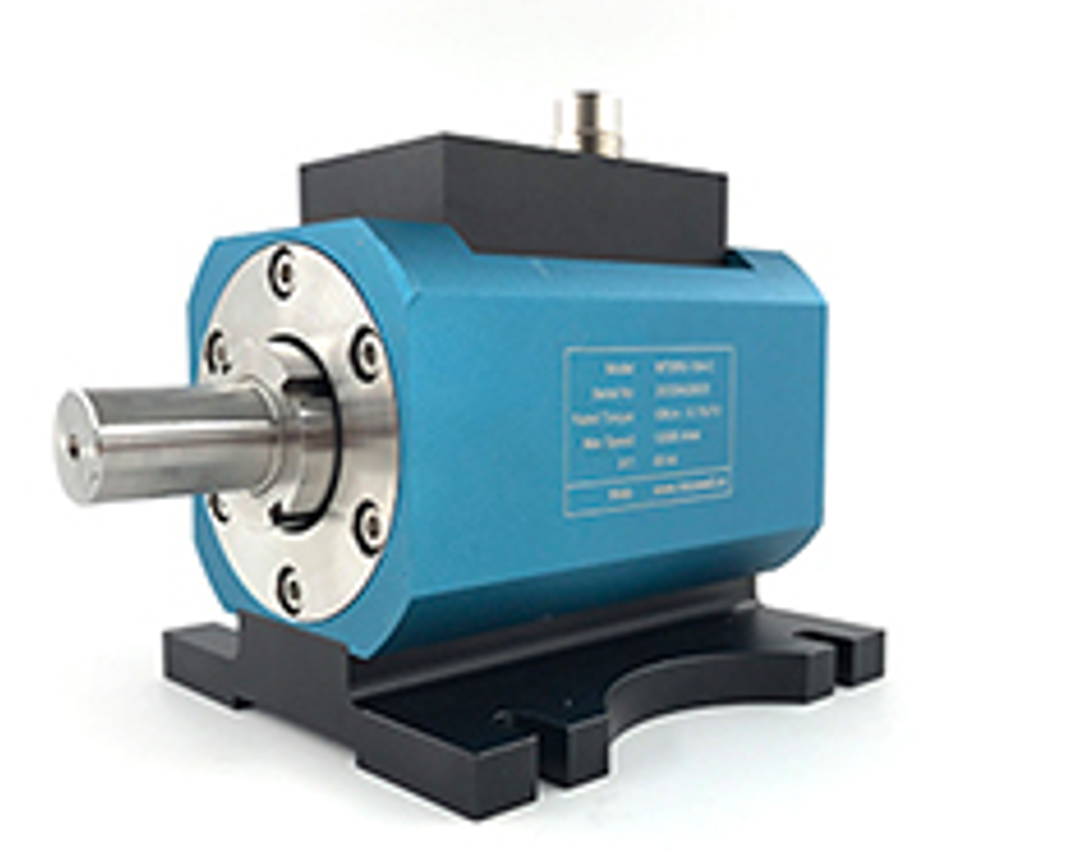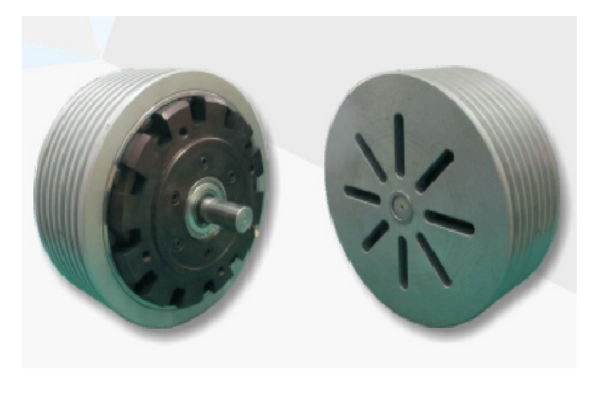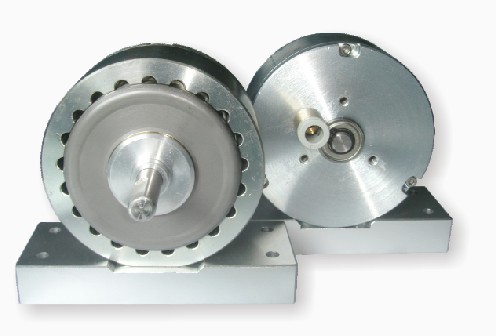You're standing trackside at Le Mans. The scream of engines vibrates in your chest, a primal roar of unleashed power. But beneath the visceral noise lies a secret language, a silent symphony conducted not by pistons alone, but by *torque*. That invisible force twisting the crankshaft, propelling tons of metal forward with relentless determination. How do we truly understand it? Measure it? Harness it? The answer lies not on the racetrack, but in the meticulous, often unseen world of **Motor Torque Testing**. This isn't just data collection; it's the key to unlocking efficiency, reliability, and groundbreaking innovation. Strap in – we're diving deep into the heart of rotational force.
**Why Torque Isn't Just a Number: It's the Engine's Whisper 🗣️💨**
Think about your morning coffee grinder. The satisfying whir, the coarse grounds produced. Now imagine it straining, whining, taking twice as long. That’s a torque issue. Torque, simply put, is the rotational force a motor generates. It’s what gets things moving against resistance – lifting elevators, spinning conveyor belts, driving electric vehicles up hills, or powering the delicate movements of a robotic surgical arm.
But torque isn't static. It fluctuates wildly during startup, under varying loads, at different speeds, and as components heat up. A motor might boast an impressive peak torque on a spec sheet, but if it can't deliver consistent torque across its operating range, or if it wastes energy generating excessive vibration or heat instead of useful work, it's fundamentally flawed. That's where torque testing transcends mere validation; it becomes the Rosetta Stone for understanding a motor's true character, its strengths, its weaknesses, and its hidden potential.
**Beyond the Brochure: The Nuts and Bolts of Accurate Torque Measurement 🔩📊**
Forget vague promises. The science of torque testing is precise and demanding. It's about capturing the intricate dance between force and rotation under real-world, or carefully simulated, conditions. How do we translate this invisible twist into actionable data?
1. **The Test Bed: Where Science Meets Spin 🧪🌀**

* **The Dynamometer (Dyno):** The undisputed champion. Imagine a motor firmly mounted, its shaft connected to a sophisticated device designed to apply controlled load and measure the resulting torque and speed simultaneously. Think of it as a treadmill for motors, but far smarter. Dynos come in various flavors:
* **Absorption Dynos (Eddy Current, Hysteresis Brake, Water Brake):** They absorb the motor's power, dissipating it as heat. Excellent for testing high-power motors continuously. Like applying a carefully calibrated brake.
* **Regenerative Dynos:** The eco-warriors! They convert the motor's mechanical power back into usable electricity, feeding it back into the grid or powering other tests. Ideal for endurance testing and reducing energy costs. A closed-loop powerhouse.
* **The Torque Transducer/Sensor:** The heart of the measurement. These highly sensitive devices sit *in-line* between the motor and the dyno (or load). As torque is applied, they experience minute mechanical strain (torsion) which is converted into an electrical signal proportional to the torque. Precision engineering at its finest.
* **Couplings:** Often overlooked but critical. They connect the motor shaft to the torque sensor and then to the dyno. They must transmit torque faithfully *without* adding significant inertia or introducing unwanted vibrations or misalignment errors. The silent enablers.
* **Control \u0026 Data Acquisition (DAQ) System:** The brain and nervous system. Sophisticated software controls the dyno load, motor speed (via a drive), and collects vast streams of data from the torque sensor, speed sensors, temperature probes, voltage, and current meters. This is where the raw signals become meaningful insights.
2. **The Critical Metrics: More Than Just Max Torque 📈🧠**
While peak torque grabs headlines, the full story is told through a constellation of measurements:
* **Torque-Speed Curve (T-N Curve):** The fundamental fingerprint of a motor. This graph reveals everything: starting torque, pull-up torque, breakdown torque, and how torque behaves across the entire speed range. Is it flat and consistent (ideal for constant load applications)? Does it peak sharply? Does it drop off catastrophically at high speeds?
* **Efficiency Map:** The holy grail for energy-conscious design. This 2D map shows efficiency (%) across the entire operating envelope (different torque and speed combinations). Where are the sweet spots? Where is energy being wasted as heat? Mapping this is crucial for optimizing battery life in EVs or reducing operating costs in industrial settings.
* **Power Curve:** Calculated from torque and speed (Power = Torque x Speed x Constant). Shows the actual mechanical power output.
* **Ripple Torque (Cogging):** The small, rapid fluctuations in torque output inherent in many motor designs (especially brushless DC and steppers). Excessive ripple causes vibration, noise, and can affect precision in applications like CNC machining or robotics. Testing quantifies and helps minimize it.
* **Thermal Performance:** How does torque capability change as the motor heats up? Continuous torque ratings depend heavily on effective cooling. Testing under sustained load reveals thermal limits and potential hotspots.
* **Dynamic Response:** How quickly and accurately does the motor's torque respond to sudden load changes or speed commands? Critical for servo systems, robotics, and any application requiring precise motion control.
* **Losses Analysis:** Breaking down *where* the energy is going: Copper losses (I²R in windings), Iron losses (hysteresis and eddy currents in the stator/rotor core), Mechanical losses (friction, windage). Pinpointing loss mechanisms is key to efficiency gains.
**The Real-World Impact: Where Testing Fuels Innovation 🚀🌍**

Torque testing isn't an academic exercise confined to R\u0026D labs. Its impact reverberates across countless industries:
1. **Electric Vehicles (EVs) \u0026 E-Mobility 🚗⚡:** This is perhaps the most visible frontier.
* **Optimizing Drive Units:** Ensuring motors deliver smooth, powerful acceleration from standstill, efficient cruising torque, and robust regenerative braking torque.
* **Range Maximization:** Precise efficiency mapping directly translates to squeezing more miles out of every kilowatt-hour in the battery. Every percentage point matters.
* **NVH Reduction:** Quantifying and minimizing torque ripple is paramount for the near-silent, vibration-free experience consumers demand in premium EVs.
* **Durability Validation:** Subjecting motors to rigorous duty cycles simulating years of harsh driving conditions to guarantee reliability.
2. **Industrial Automation \u0026 Robotics 🤖🏭:**
* **Precision Motion Control:** Servo motors in robotic arms or CNC machines rely on exceptionally smooth, responsive, and predictable torque. Testing ensures they can handle varying inertial loads and position payloads with micron-level accuracy.
* **Conveyor Systems \u0026 Material Handling:** Motors must deliver consistent starting torque to overcome inertia and friction, and maintain torque under variable loads without stalling.
* **Pump \u0026 Fan Drives:** Optimizing efficiency for motors that run continuously, often at fixed speeds but under varying fluid pressures. Small efficiency gains here lead to massive energy savings globally.
3. **Aerospace \u0026 Defense ✈️🛡️:**
* **Actuation Systems:** Testing motors powering flight control surfaces (ailerons, rudders), landing gear, or weapon systems under extreme conditions (temperature, altitude, vibration). Reliability and precision are non-negotiable.
* **Auxiliary Power Units (APUs):** Ensuring generators and motors within APUs perform flawlessly under demanding electrical loads.
4. **Medical Devices ⚕️💉:**
* **Surgical Robots:** Demanding ultra-smooth, low-ripple torque for delicate, tremor-free movements. Patient safety hinges on absolute precision and reliability.
* **Infusion Pumps \u0026 Diagnostics:** Consistent torque ensures accurate fluid delivery and reliable operation of centrifuges or other moving parts within lab equipment.
5. **Consumer Appliances \u0026 Power Tools 🧰🔌:**
* **Optimizing Performance:** Ensuring your drill has enough torque to drive screws without stalling, or your blender can crush ice smoothly. Testing balances power, efficiency, noise, and cost.
* **Predicting hysteresis brakes :** Accelerated life testing under overload conditions helps manufacturers design products that last.
**Navigating the Testing Maze: Challenges \u0026 Cutting-Edge Solutions 🧩🔍**
Accurate torque testing isn't without its hurdles. Here's what keeps engineers up at night and how modern solutions are tackling them:
* **High-Speed Testing:** Measuring torque accurately at tens of thousands of RPM requires ultra-responsive sensors with minimal inertia and sophisticated signal processing to handle high frequencies and potential noise. Advanced optical or surface acoustic wave (SAW) torque sensors are pushing boundaries.
* **Ultra-Low Torque Measurement:** Applications like micro-motors in medical devices or miniature drones demand sensors capable of resolving fractions of a millinewton-meter. Strain gauge technology is constantly evolving, and non-contact methods gain traction.
* **Extreme Environments:** Testing motors destined for space vacuum, deep-sea pressure, cryogenic temperatures, or scorching heat chambers requires specialized sensors, couplings, and instrumentation designed to survive and perform. Ruggedized, hermetically sealed components are essential.
* **Transient \u0026 Dynamic Capture:** Capturing rapid torque spikes during startup, load dumps, or fault conditions demands high-bandwidth DAQ systems capable of sampling data points at rates exceeding hundreds of thousands per second. Think of it as high-speed photography for torque events.
* **System Integration \u0026 Automation:** Modern test cells are complex ecosystems. Seamless integration between the dynamometer, motor drive, DAQ, thermal chambers, and control software is vital. Automation allows for unattended endurance testing and complex, repeatable test sequences.
* **Data Deluge \u0026 AI Insights:** A single test can generate gigabytes of data. The challenge is no longer just *collecting* data, but *understanding* it. Artificial Intelligence and Machine Learning are revolutionizing torque testing:
* **Predictive Maintenance:** Analyzing subtle changes in torque signatures over time to predict bearing wear, winding degradation, or imbalance *before* failure occurs.
* **Anomaly Detection:** Using AI to automatically flag unusual torque behavior during testing that might indicate a manufacturing defect or design flaw, even if it's subtle.
* **Optimization Algorithms:** AI can help identify optimal control parameters for a motor based on its unique torque-speed-efficiency characteristics derived from testing.
* **Virtual Sensor Development:** Using AI models trained on vast amounts of test data to *infer* torque based on easier-to-measure signals like current and voltage, potentially reducing the need for physical torque sensors in some production applications.
**Choosing Your Torque Testing Partner: Beyond the Spec Sheet 🤝💡**
Investing in torque testing capabilities is significant. Whether building an in-house lab or partnering with a specialized testing service, look beyond the basic horsepower or torque range specs. Consider:
* **Application Expertise:** Do they understand the *specific* challenges and requirements of your industry (EV, industrial, medical, etc.)? Can they simulate real-world conditions?
* **Measurement Accuracy \u0026 Traceability:** What are the uncertainties of their system? Is their calibration traceable to national standards (NIST, NPL, etc.)? Accuracy is paramount.
* **Dynamometer Flexibility \u0026 Control:** Can it handle your required speed and torque ranges? Does it offer precise control modes (speed, torque, position)? Can it simulate complex load profiles?
* **Sensor Technology \u0026 Range:** Do they have the right sensors for your needs (high-speed, low-torque, harsh environment)? What's their approach to sensor calibration and maintenance?
* **Data Acquisition \u0026 Analysis Capabilities:** Can their system capture the transients you care about? Do they provide advanced analysis tools or customizable reports? Can they handle the data volume?
* **Thermal \u0026 Environmental Testing:** Can they integrate temperature control or full environmental chambers into the test setup?
* **Safety \u0026 Reliability:** Robust safety systems (guarding, emergency stops, overload protection) are non-negotiable for high-power testing.
* **Future-Proofing:** Is the system scalable? Can it integrate with emerging technologies like AI-driven analysis or digital twins?
**The Future Twists: Emerging Trends in Torque Testing 🔮🌀**
The field is far from static. Here’s what’s shaping the future of how we measure the twist:
* **Integrated Motor-Drive Testing:** Testing the motor and its electronic controller/drive *as a complete system* is becoming standard. The interaction between the two profoundly impacts overall performance and efficiency.
* **Wireless \u0026 Non-Contact Sensing:** Reducing the complexity and potential points of failure in test setups. Techniques like laser Doppler vibrometry for inferring torque or advanced telemetry for wireless sensor data are evolving.
* **Digital Twins:** Creating high-fidelity virtual replicas of motors fed by real-world test data. This allows for simulation-based optimization, predictive maintenance, and virtual testing of design iterations before physical prototypes exist.
* **Focus on Efficiency \u0026 Sustainability:** Testing will continue to be laser-focused on minimizing energy losses across the entire operating range, driven by global regulations and the push for net-zero.
* **Standardization \u0026 Benchmarking:** As industries mature (especially EVs), standardized test procedures for torque, efficiency, and durability become increasingly important for fair comparison and consumer confidence.
* **Miniaturization:** As motors get smaller (think wearables, micro-drones, micro-medical devices), so too must the testing technology, demanding incredible precision at tiny scales.
**Conclusion: Mastering the Invisible Force 🔐✨**

In the relentless pursuit of better machines – quieter, more powerful, more efficient, more reliable – mastering the measurement and understanding of motor torque is not optional; it's fundamental. It’s the difference between guesswork and engineering, between adequate and outstanding, between a product that functions and one that excels. Torque testing is the rigorous science and insightful art that translates the raw, rotational energy of a motor into a language engineers can understand, optimize, and trust.
It’s the silent partner behind every whirring drone, every smoothly accelerating EV, every precisely placed robotic arm, and every industrial process humming along efficiently. By investing in precision torque testing, you’re not just collecting data; you’re investing in the intelligence, the longevity, and the ultimate success of the machines that shape our world. So, the next time you feel the smooth power of an electric motor, remember the invisible force meticulously measured and mastered – the silent symphony of spin, conducted with precision. 🎻⚙️
Understanding torque isn't just about knowing how much twist you have; it's about knowing *exactly* how, when, and where to apply it for maximum impact. That's the power revealed. That's the future engineered. 🔋💪
